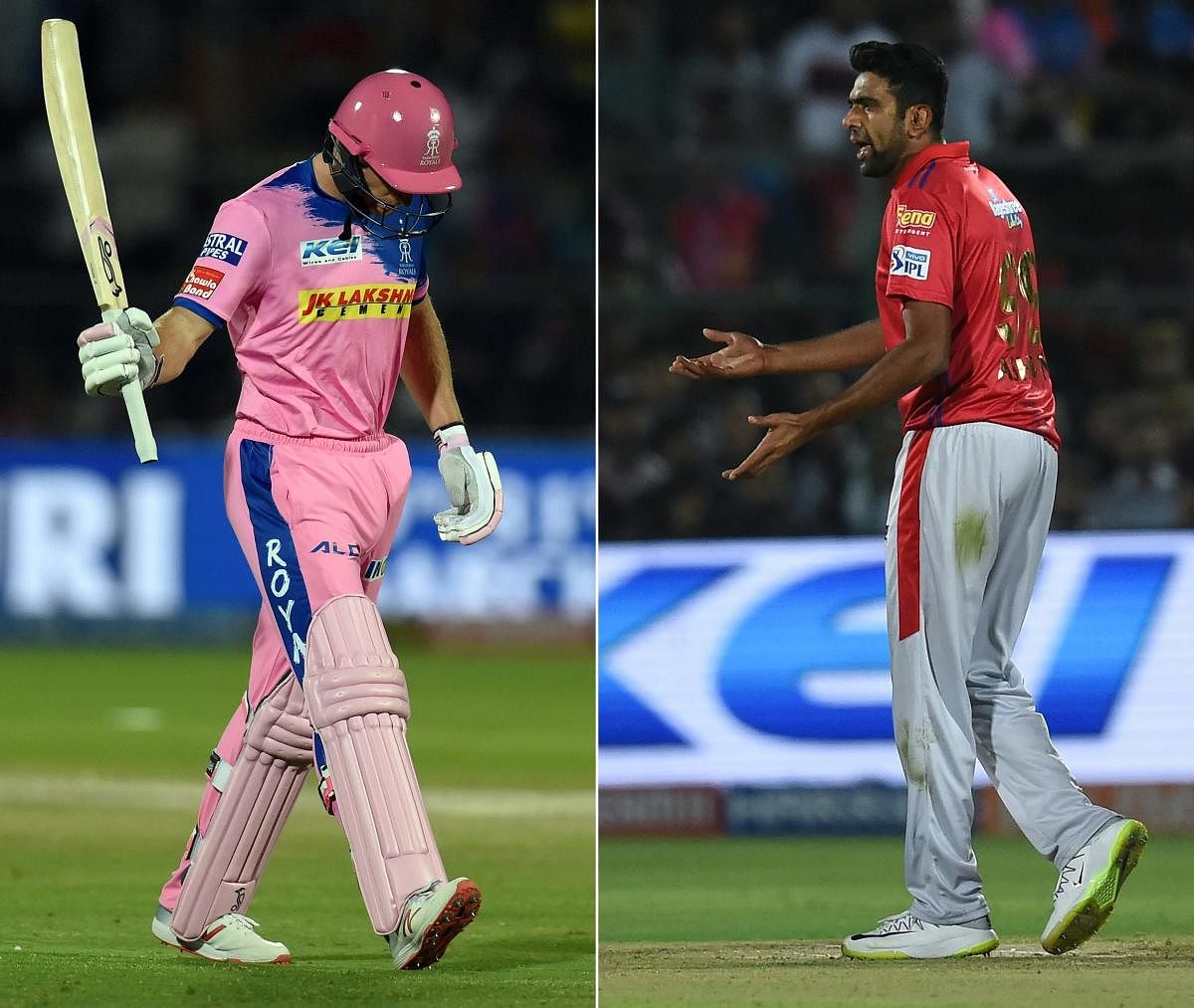
A lot had already happened in just three days of IPL-12. Social media was abuzz hailing David Warner’s strong comeback, fans and TV pundits were agog about Andre Russell’s mind-numbing hitting, people were awed by Rishabh Pant’s onslaught and everyone was marvelling Chris Gayle’s undiminished power-hitting.
There was also surprise over RCB batting’s meltdown on a Chennai turner and concern over Jasprit Bumrah’s shoulder injury but by late on Monday night, Kings XI Punjab skipper R Ashwin’s “mankading” of Rajasthan Royals’ batsman Jos Buttler had taken the social media platforms by storm. Opinions were divided largely on nationalities but there were some who cut across their identity lines to support the other.
The incident happened in the 13th over of Royals’ innings on Monday night with the hosts comfortably placed at 108/1 in their chase of Punjab’s 184. Before delivering the fifth ball of his final over, Ashwin ran out Buttler who had backed up by more than a yard. It’s naïve to say Royals, in winning position till that point, eventually lost the match because of this controversial dismissal but it was bound to leave a bad taste in the mouth nevertheless.
There were no smiles exchanged between Ashwin and Buttler after the match and Royals’ coach Paddy Upton refused, quite childishly, to shake hands with the off-spinner. He also uttered something in Ashwin’s ear, and looking at Punjab captain's reaction you can rest assured that he wasn’t congratulating him for the win.
Like always, the much-abused “spirit of cricket” was invoked by many while several others questioned Ashwin’s intent rather than his actual act. The exhibition of spirit of cricket can win you friends but not matches. And knowing Ashwin, his choice was clear. Strictly going by the law on "non-striker leaving the crease early", there is nothing wrong in what he did, but did he deliberately exploit the “ambiguity” in the law to outfox a habitual offender?
Let’s see the sequence of events. As Ashwin enters the popping crease seemingly ready to deliver the ball, he stops, appears to wait for a few seconds as Buttler backs up and then takes off the bails before appealing.
The replays suggest Buttler’s bat is within the crease at the point Ashwin is expected to release and it’s possible he would have been still inside had the bowler delivered the ball. But the decision was referred to the third umpire, Bruce Oxenford who flashed out signal on the giant screen.
In the old law, Buttler, who has been previously dismissed in this manner by Sri Lanka’s Sachithra Senanayake in 2014, probably would have gotten away but the wording in the updated law leaves a lot of scope for subjective interpretation.
And what does the updated law (41.16) on this mode of dismissal say?
"If the non-striker is out of his/her ground from the moment the ball comes into play to the instant when the bowler would normally have been expected to release the ball, the bowler is permitted to attempt to run him/her out."
In the old law, a bowler was allowed to run out a non-striker before entering their delivery stride. The amended law states that a non-striker can be run-out up to the “instant at which the bowler would be expected to deliver the ball.” Simply put, the time-frame has been extended in favour of the bowler.
But how to decide when the bowler can be expected to deliver the ball? Some people have pointed out bowlers, including Ashwin, pausing for a second or two at the point of delivery before releasing the ball in normal circumstances.
After much debate and deliberation, Marylebone Cricket Club, the guardians of the laws of the game, had brought changes with an intention to put the onus on the non-striker to remain in his/her ground. Explaining the rationale behind the modification of the law in 2017, MCC had said: “It is often the bowler who is criticised for attempting such a run-out but it is the batsman who is attempting to gain an advantage. The message to the non-striker is very clear ‘if you do not want to risk being run out, stay within your ground until the bowler has released the ball,’” MCC had said in 2017.
Problem with cricket is it applies “spirit of the game” selectively that undermine its own laws. If a bowler can be no-balled even if he oversteps by a millimetre or two, why should a bowler be sympathetic to a batsman stealing that extra inch or two to avoid a potential run-out? It's no less than cheating. But while MCC claims it’s a step towards keeping the batsman within the crease till the ball has been released, by introducing the stipulation “expected to release,” it is also encouraging the batsman to take a chance to gain that unfair advantage.
Why can’t the law just state that a bowler is permitted to attempt to run out a non-striker if he/she leaves his/her ground before the ball has been released? Why make it complex and give room for different interpretations? Hopefully the raging for and against debate will lead to simpler and clearer law.